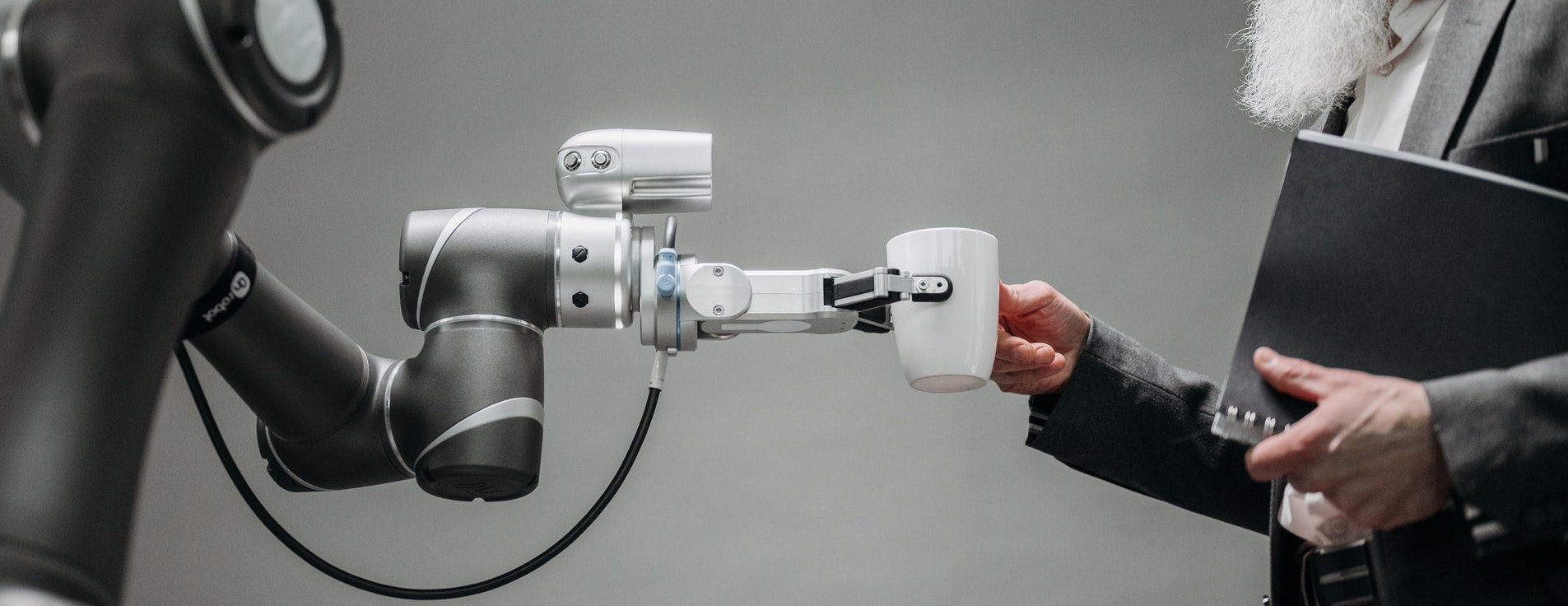
Are robots finally coming for your job? Automation has long been the fear of the working person; ever since the industrial revolution workers have feared that machines would replace them, but are these fears justified? As the world begins to emerge from Covid, it seems automation and robots are the new flavour of the month, but this seemingly signals a change in the way we will work, not in the workforce itself.
According to GlobalData, the global robotics industry was worth $45bn in 2020 and is projected to grow to $568bn by 2030, a compound annual growth rate (CAGR) of 29% – the industry is clearly here to stay. Growth is predicted to continue in the industrial sector with industrial robots (mainly involved in the assembly line) driving most of the innovation that will eventually spill over into other sectors.

Robotics can largely be broken down into two subsectors: industrial and service. Industrial robots make up the vast majority of those in operation today, taking many forms but always involved in industrial production in some shape or form. The come in the form of caged robots (the static robot arms you might see on car assembly line) and cobots (collaborative robots) that work hand in hand with humans rather than replacing them.
Service robots, on the other hand, are not so limited in their scope, and can take a multitude of different forms. Broadly, however, they exist to help humans with chores in the home or to entertain us. This sector is, perhaps, the one where most of us will notice the most change in the coming years, as these are the consumer-facing side of the robotics world.

Returning to the present, the industrial robotics industry is experiencing somewhat of a pandemic-induced renaissance.
Several factors have coincided to make this happen. Firstly, staff shortages have hit many countries around the world for a multitude of reasons – here in the UK, the number of EU workers looking for work has fallen by as much as 36%, leaving many low-paid warehouse jobs vacant. On top of this, Covid isolation periods and sickness have hit the productivity of many businesses where picking and packing time is of the essence.
Secondly, the pandemic came with the not-too-surprising side effect of driving up online shopping sales. This in turn increased the need for more robust order processing facilities in warehouses around the globe. Humans, while good at many things, tend not to be the most efficient at monotonous and routine tasks – certainly not as efficient as their robot counterparts; machines made with one specific task in mind.
But efficiency is not the only concern in these jobs, staff retention is too. Warehousing jobs have one of the worst staff turnover rates of any industry, estimated to be at around 46.1% by the US Bureau of Labor Statistics. And this number is hardly surprising, given the working conditions many face in these jobs: extremely long hours, dismally low pay, draconian sick leave allowances, and a repetitive task-based job to boot!
Robots, on the other hand, don’t require such annoyances as sick leave a fair working wage, no. A robot you can programme to do a task and it will go about doing it until it breaks (much like a human, but without the emotions or squishy meat part).
Testament to the ever-increasing relevancy of an automated workforce is the recent acquisition of Blue Prism Group, a robotic process automation specialist, for almost £1.1bn by Vida Funds-owened Bali Bidco. Blue Prism Group designs a suite of RPA (robotic process automation) software that helps company’s increased end-to-end efficiency with intelligently automated processes. It’s clear the M&A world is paying attention.
Are robots coming for your job? No is the likely answer, but they will replace the jobs of some in society, which is likely to be a worry for those concerned. What can serve as a condolement, however, is that any time in the past where automation has taken a hold in the workplace, many new jobs have arisen around this newly created segment of the industry. The industrial revolution automated many processes, but created many more, as did the computerisation of the workplace in the latter half of the 20th century.
What is clear is that the robotics industry will present a key area for growth and investment over the coming years and decades. At Polestar, we have a lot of experience working closely with both tech and manufacturing companies – if you have any questions you’d like to ask us, don’t hesitate to get in touch.
Robotics is a fast-growing industry. According to GlobalData forecasts, it was worth $45bn in 2020, and by 2030, it will have grown at a compound annual growth rate (CAGR) of 29% to $568bn.